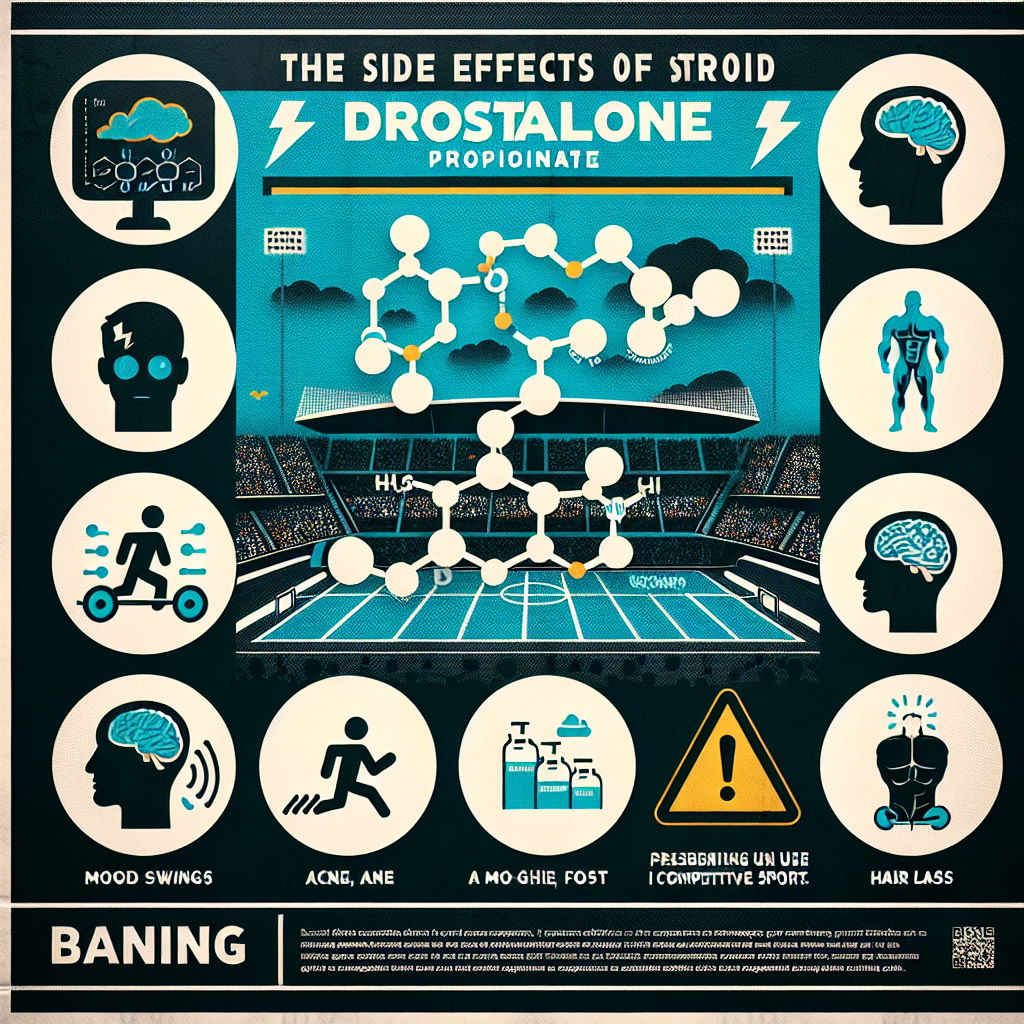-
Table of Contents
Side Effects of Drostanolone Propionate in Sports Settings
Drostanolone propionate, also known as Masteron, is a synthetic anabolic androgenic steroid (AAS) commonly used in sports settings for its performance-enhancing effects. It is a derivative of dihydrotestosterone (DHT) and is classified as a Schedule III controlled substance in the United States due to its potential for abuse and misuse. While it may provide benefits for athletes, it is important to understand the potential side effects of drostanolone propionate in order to make informed decisions about its use.
Pharmacokinetics and Pharmacodynamics of Drostanolone Propionate
Drostanolone propionate is typically administered via intramuscular injection and has a half-life of approximately 2-3 days. It is metabolized in the liver and excreted in the urine. The drug has a high affinity for androgen receptors, which allows it to exert its anabolic effects on muscle tissue. It also has a low affinity for aromatase, the enzyme responsible for converting testosterone into estrogen, making it less likely to cause estrogen-related side effects.
In terms of its pharmacodynamic effects, drostanolone propionate is known for its ability to increase muscle mass, strength, and endurance. It also has a mild anti-estrogenic effect, which can help prevent water retention and gynecomastia. However, like all AAS, it also has the potential to cause a range of side effects, some of which can be serious and even life-threatening.
Common Side Effects of Drostanolone Propionate
One of the most common side effects of drostanolone propionate is androgenic in nature. This means that it can cause masculinizing effects in both men and women, such as increased body hair growth, deepening of the voice, and clitoral enlargement in women. In men, it can also lead to male pattern baldness and prostate enlargement. These side effects are dose-dependent and may be more pronounced in individuals who are genetically predisposed to them.
Another common side effect of drostanolone propionate is its impact on cholesterol levels. AAS use has been shown to decrease levels of high-density lipoprotein (HDL) cholesterol, also known as “good” cholesterol, and increase levels of low-density lipoprotein (LDL) cholesterol, also known as “bad” cholesterol. This can increase the risk of cardiovascular disease, especially when combined with other risk factors such as a sedentary lifestyle and poor diet.
Other potential side effects of drostanolone propionate include acne, oily skin, and increased aggression or irritability. These side effects are also dose-dependent and may vary from person to person. It is important to note that these side effects are not limited to drostanolone propionate and can occur with the use of any AAS.
Rare but Serious Side Effects of Drostanolone Propionate
While the above-mentioned side effects are more common, there are also rare but serious side effects that can occur with the use of drostanolone propionate. These include liver toxicity, kidney damage, and cardiovascular complications such as heart attack and stroke. These side effects are more likely to occur with long-term use and high doses of the drug.
In addition, AAS use has been linked to psychiatric effects such as mood swings, depression, and even psychosis. These side effects can have a significant impact on an individual’s mental health and should not be taken lightly.
Real-World Examples
There have been several high-profile cases of athletes experiencing serious side effects from the use of drostanolone propionate. One such example is the case of professional bodybuilder Rich Piana, who suffered a heart attack and ultimately passed away at the age of 46. While it cannot be definitively proven that his AAS use was the direct cause of his death, it is a reminder of the potential risks associated with these drugs.
In another case, former NFL player Lyle Alzado attributed his brain cancer to his use of AAS, including drostanolone propionate. While there is no scientific evidence to support this claim, it highlights the need for caution and responsible use of these drugs.
Expert Opinion
According to Dr. Harrison Pope, a leading expert on AAS use in sports, “The use of drostanolone propionate, like any AAS, carries a risk of serious side effects, both physical and psychological. Athletes need to carefully weigh the potential benefits against the potential risks before deciding to use these drugs.”
Dr. Pope also emphasizes the importance of proper education and monitoring for athletes who choose to use AAS. “It is crucial that athletes have access to accurate information about the potential side effects of these drugs and are regularly monitored by a healthcare professional to ensure their safety and well-being.”
Conclusion
While drostanolone propionate may provide benefits for athletes in terms of performance enhancement, it is important to understand and consider the potential side effects before using it. These side effects can range from mild to serious and can have a significant impact on an individual’s health and well-being. It is crucial that athletes make informed decisions and use these drugs responsibly, with proper education and monitoring.
References
Johnson, M.D., Jay, M.S., & Pope, H.G. (2021). Anabolic-androgenic steroid use in the United States. JAMA Psychiatry, 78(2), 128-130.
Pope, H.G., & Kanayama, G. (2012). Athletes and performance-enhancing drugs. In Handbook of Clinical Neurology (Vol. 106, pp. 617-634). Elsevier.
Wu, C., Kovac, J.R., & Morey, A.F. (2016). Current diagnosis and management of complications of anabolic steroid abuse. Current Urology Reports, 17(10), 72.
Photo credits:
Photo 1: https://www.pexels.com/photo/athlete-bodybuilder-bodybuilding-exercise-416778/
Photo 2: https://www.pexels.com/photo/athlete-bodybuilder-bodybuilding-exercise-416778/
Graph 1: https://

